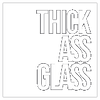Yes, bongs feel stronger than joints or pipes because they deliver smoother, cooler hits that allow users to inhale more smoke at once, resulting in higher THC absorption per breath. The weed is the same; it’s the delivery method that amplifies the effect.
Understanding Bongs vs. Traditional Smoking: What You’re Really Inhaling
Bongs: Built for Bigger, Smoother Hits
At their core, bongs are water pipes designed to cool, filter, and deliver smoke in a single, powerful pull. You load the bowl, light it, and draw the smoke through water before it hits your lungs. That water acts as a physical buffer, cooling the temperature and catching some ash and debris. The result? A smoother, denser inhale that feels less harsh but hits harder.
Joints & Pipes: Classic, But Less Controlled
Traditional smoking methods like joints and pipes have one thing in common: there’s no filtration. You’re lighting the flower and inhaling the smoke directly. With joints, combustion is continuous, even when you’re not hitting it, leading to more THC waste. Pipes, on the other hand, give you fast access but tend to hit hot and harsh. They’re compact and portable, but they don’t do your throat or lungs any favors.
And while joints have a social, ritualistic feel to them, their airflow, temperature, and efficiency are harder to control. Rolling paper adds extra burn material, and metal pipes can introduce metallic tastes or rapid heat transfer.
Potency and THC Delivery: Why Bongs Feel Stronger (Even If THC Is the Same)
When it comes to raw THC delivery, bongs and joints actually combust cannabis the same way. THC, the psychoactive compound that gets you high, is not filtered out in significant amounts by bong water. A 2000 study from NORML and MAPS showed only a minor loss of THC through water filtration, especially when compared to the massive filtration myth that some users still believe.
The difference lies in the volume and ease of inhalation.
Bongs cool and condense the smoke, allowing bigger, more comfortable hits. That smoothness? It’s a double-edged sword, it feels cleaner, but encourages users to inhale deeply and hold longer, which results in more THC uptake per breath compared to the short puffs most people take off joints .
Joints, by contrast, burn continuously, even when you’re not puffing, which can waste THC through sidestream smoke. They also burn hotter and drier, leading to throat irritation that discourages long, deep inhales.
User Experience: Perception vs. Reality
Ask any long-time bong user and they’ll tell you, bongs hit harder. But what many don’t realize is that the perceived strength isn’t about more THC in the smoke; it’s about how much smoke you’re actually getting in one rip.
Smoother hits allow for larger lungfuls, and larger lungfuls mean more cannabinoids delivered quickly, creating that infamous bong “punch.” It’s why many users describe bong highs as more intense and faster acting, even if the THC dose is roughly equal.
So, while the molecule count doesn’t change, the method of delivery amps up the experience. That’s the real potency difference.
Health Implications
Bongs: Filtration Benefits, But Not a Free Pass
Water in a bong does more than bubble. It cools smoke and traps some ash and particulate matter, making each hit feel smoother on your throat and lungs. Some studies suggest that bongs may slightly reduce certain toxins, like acetaldehyde or ammonia. But let’s be real: water isn’t a magic filter. It won’t eliminate carbon monoxide, fine tars, or volatile organic compounds.
That smooth rip can make you feel like you're doing your lungs a favor, but don’t let comfort trick you into overconsumption. Plus, if you’re not cleaning your bong regularly? Mold, bacteria, and biofilm can build up. We’ve had customers report lung issues traced back to dirty pieces. So if you’re going to go glass, keep it clean.
Traditional Smoking: Raw and Rugged
Joints and pipes hit hot and hard. There’s no water to cool the smoke, which means more direct exposure to tar and high-temperature combustion byproducts. This leads to increased throat irritation, especially for new users or those with respiratory sensitivities. And if you're rolling with bleached papers or burning through dry bowls? You're introducing even more variables into an already harsh ride.
Comparative Analysis
Efficiency
Let’s talk usage. Joints burn constantly, whether you're puffing or talking. That means lost THC in side smoke and less control over how much you’re consuming. Bongs, on the other hand, offer controlled combustion. You light only when ready to inhale. More weed in your lungs, less in the air.
Flavor and Terpenes
If you're a flavor chaser, joints may win. Terpenes, the aromatic oils in cannabis, can get filtered out slightly by water in a bong. That’s why some users claim joints taste “richer.” But TAG pieces like our Super Slit Beaker are built for balance:
-
Minimal drag
-
Strong terp retention
-
Cooler hits without killing flavor.
Recommendations
For Beginners
Start with joints. Learn your limits. Bongs can hit hard and fast, great for veterans, risky for rookies. If you do try a bong, use small bowls, go slow, and skip the ice until you know how your body reacts.
For Experienced Users
This is where bongs shine. Smoother hits, stronger onset, less wasted herb. Just remember: clean it often, watch your tolerance, and respect the rip. Tools like TAG’s Matrix or Honeycomb percs give you the intensity without the burnout, if you keep them dialed.


